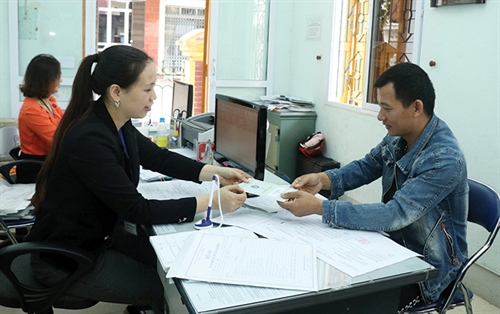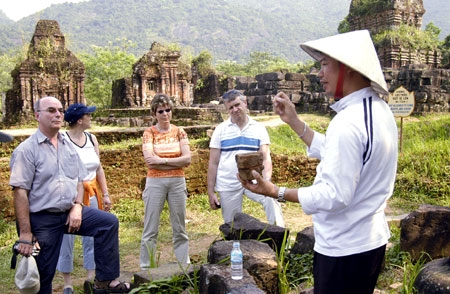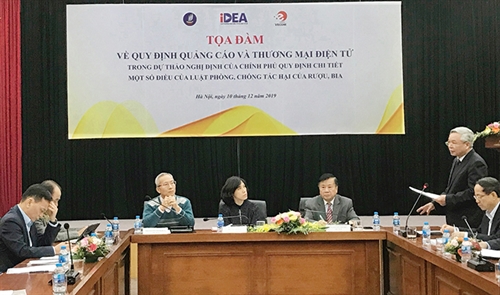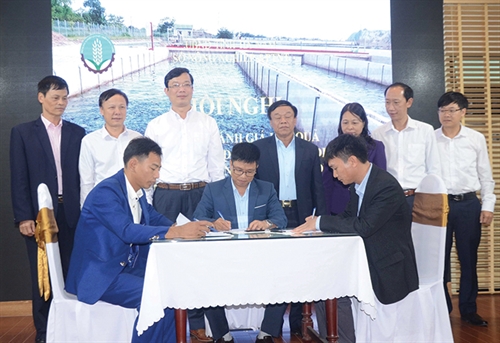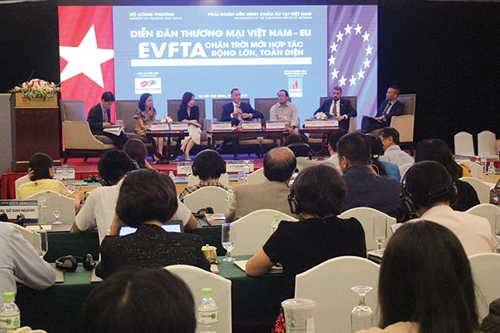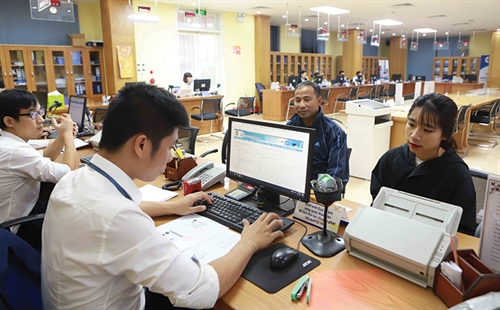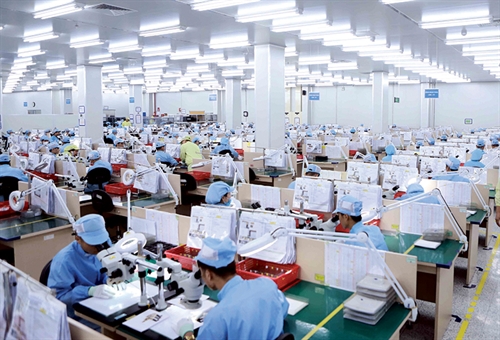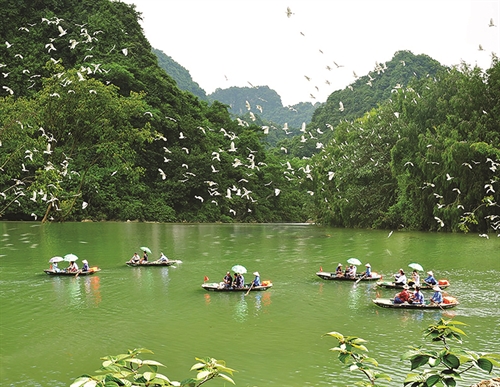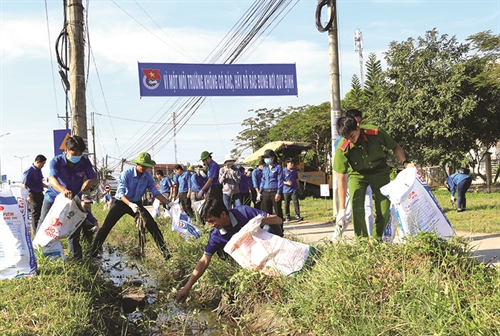The current coronavirus (COVID-19) pandemic is killing thousands of people globally and causing major impacts to livelihoods, society, and economies across the world. COVID-19 is understood to have originated in wildlife, most probably in a market selling live wildlife in China[1]. The conditions that lead to the emergence and transmission of these zoonotic pathogens to humans are also prevalent in Vietnam. It’s time to change the current approach to regulating the trading and use of live wildlife for the wellbeing and survival of all on this planet.
Wildlife Conservation Society - Vietnam Program
Creation, emergence and transmission of zoonotic pathogens in the wildlife supply chain
Wildlife is commonly traded and used in Vietnam for meat, pets, skins, traditional medicine, or display in private zoos and collections. Animals from a wide range of species are sourced in Viet Nam, neighboring countries, and from across the globe and include those trapped from the wild or sold from captive breeding facilities. From source to market, the wildlife supply chain (both legal and illegal) involves conditions that present a high risk for the emergence and transmission of zoonotic pathogens which could potentially cause future pandemics such as COVID-19, as evidenced by SARS, H5N1, and MERS[2].
Different species of wildlife are stored and housed, dead and alive, at high densities and in close proximity to each other and domestic animals in restaurants, pet shops, wholesale markets, warehouses, and commercial breeding farms. They also come together for shorter periods of time in high volumes as they pass international boundaries. There is exchange and introduction of animals to the same or adjacent enclosures without disease screening or quarantine procedures.
During transportation and storage, wildlife is kept in confined conditions where vermin, people, and fomites pass between cages and enclosures. Husbandry conditions are often poor or inappropriate to that species e.g. fecal matter not cleaned and poor diets which generally leave animals in a stressed, weak, and immuno-compromised state. Wildlife are often kept at high densities in enclosures during trade which facilitates pathogen transmission and virus spill-over events from different species.
The slaughter and preparation of animals for consumption often takes place in close proximity to live animal cages and in an un-hygienic manner further spreading viruses and sharing potential pathogens.
Evidence from recent studies in Vietnam suggests that as wildlife moves along the wildlife supply chain, from capture site to the restaurant plate, the prevalence and diversity of pathogens increases highlighting the increasing risk of pathogen transmission and novel viral emergence along the wildlife trade chain[3].
In the case of SAR-CoV-2, the virus and other viral families occur naturally in wildlife and have been found at multiple points along legal and illegal wildlife supply chains in the country.
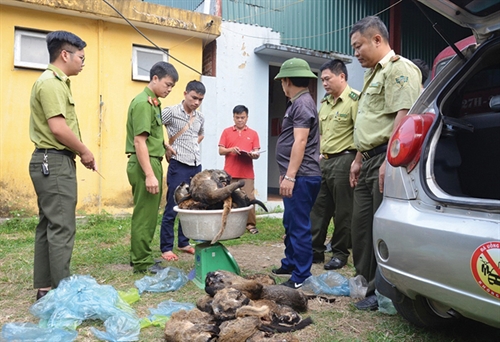 |
| Dien Bien province’s Environmental Police hands over wildlife seized as evidence of a smuggling case to the Forest Ranger force__Photo: Xuan Tien/VNA |
Scientists have detected a wide range of viruses, including corona viruses, in not only free-ranging wildlife but also animals along the legal and illegal wildlife trade supply chain in Vietnam and multiple other countries where humans harvest, trade, and consume wildlife[4]. This includes wildlife farms, shipments, and markets. Research has found the highest rates of detection in species of mammals and birds[5].
These human-wildlife super-interfaces along the wildlife trade supply chain harbor the perfect conditions for the creation of novel viruses. Through re-assortment, realignment and exchange of viral components among a diversity of wildlife species, new viruses are created and sometimes, one of these novel viruses can enter and multiply in a human cell causing infection[6]. Every once-in-a-while this novel virus will then transmit between humans, laying the foundation for a potential pandemic. As humans increase contact with wildlife populations, particularly under the above conditions, the risk of the emergence of a new viral pathogen and subsequent human disease is massively accelerated[7].
Increasing sampling along the wildlife trade chain will add to the already solid evidence base that establishes the prevalence of viruses in different species, but due to the rareness of the event it is unlikely that even with increased surveillance we will be able to create systems that can detect or identify every pathogen ahead of a spillover event where it is transmitted to humans[8]. It is important to heed the warnings in existing information. Our strategies need to be focused on reducing these interfaces and points along the supply chain that promote the creation, emergence and transmission of pathogens. This means significantly reducing the volume and diversity of species traded, and reducing the number of people involved in the trade of wildlife.
The right time for revision of wildlife trade and consumption policy
Whenever an epidemic breaks out in the country, Vietnamese Government leaders immediately devise specific measures to control it, including enhancement of strengthening law enforcement to reduce illegal wildlife trade by the competent agencies.
Amidst the ongoing COVID-19 pandemic, Prime Minister Nguyen Xuan Phuc on March 6 inked an Official Letter appointing the Ministry of Agriculture and Rural Development (MARD) to work with relevant ministries to draft a directive to prohibit the trade and consumption of wildlife[9]. The strategic objective of this Directive should be to ensure Vietnam can prevent future outbreaks of zoonotic pathogens by addressing the high-risk interfaces found in the supply chains of wildlife. Maintaining business as usual will not achieve this goal. This requires short-term actions to immediately reduce high-risk interfaces where viral pathogens could emerge and longer-term reform of a number of governmental decrees and decisions. Let’s examine some recommendations below.
Prohibiting highest-risk parts of the wildlife supply chain involving highest risk taxa
There is no such thing as risk-free trade and consumption of wildlife whether they are wild-caught or farmed. The conditions for viruses can emerge and be transmitted to humans occur in legal, regulated trade as much as in illegal markets[10].
To ultimately minimize the risks to public health of viral disease emergence from wildlife, we recommend the Prime Minister’s Directive to include specific precautionary measures that restrict the killing, commercial breeding, transport, buying, selling, storage, processing and consuming of wildlife to reduce the risk of a novel virus emerging along the wildlife trade value chain to safeguard both livestock-based production systems and human health, this would be in line with Articles 16 and 18 of the 2015 Law on Animal Health and Article 8 of the 2007 Law on Prevention and Control of Infectious Diseases.
Regarding the scope of the increased restrictions, the Prime Minister in his Official Letter 1744/VPCP-KGVX indicated prohibition of all trade and consumption of wildlife. There have been varied responses to that and there are five main options for the Government to consider based on the following analysis:
| Scope of prohibition | Analysis |
| All wild animals (wild caught or captive bred) | Eliminates the most risk of pathogen emergence/transmission. Requires a clear definition of “wild animals” as currently unavailable in Vietnam’s law. Would impact seafood, freshwater fish/crab/snail and frog sector. |
| All wild amphibians, birds, mammals, and reptiles (wild-caught or captive-bred) | Easier to define for law enforcement, regulatory and management agencies. Reduced impacts on seafood/freshwater food sector. However, it requires a clear definition of “wild” to mitigate impacts on frog farms. |
| All wild birds and mammals (wild-caught or captive-bred) | Wild birds and mammals are the highest risk taxon as hosts for zoonotic pathogens so by prohibiting these a significant level of risk would be reduced. Easier to define for law enforcement/regulatory agencies. Reduced impacts on seafood/freshwater food sector. |
| Wild birds and mammals (wild-caught or captive bred) where the end use is for a live animal or food | By restricting actions according to the end use, as China has done, adds a risk of confusing law enforcement and management agencies as they have the burden to show the intended end-use. This creates a loophole and challenge for enforcement. |
| Wild animals listed as protected in Decree 64 of 2019, Decree 06 of 2019 or the CITES Appendices in Announcement 296/TB-CTVN-HTQT | Whilst this provides a list of species to prohibit trade/consumption, as shown by results of surveillance over last decade by MARD, Ministry of Health (MOH), WCS and others, many species that carry pathogens that could transmit to humans are species outside of any legal protection e.g. bamboo rats, civets, porcupine, macaque. So this option would be insufficient to prevent future zoonotic pathogen emergence. |
Based upon the above analysis, it is recommended that the Government should prohibit the hunting, killing, captive breeding, transport, trading, storing, processing, and consumption of wild birds and mammals (wild-caught or captive-bred) and stipulates the corresponding penalties. It should be noted that the term ‘wild’ can be defined as any species not on the list of animal species permitted for rearing as livestock (Decree 13 of 2020 detailing the 2018 Law on Animal Husbandry).
In light of the COVID-19 outbreak, the 2007 Law on Prevention and Control of Infectious Diseases should be revised toward prohibiting acts of intentionally transmitting agents of infectious diseases; failing to apply or applying not in a timely manner measures for preventing and controlling infectious diseases; failing to comply with measures for preventing and controlling infectious diseases at the request of competent agencies and organizations.
Tightening regulations on commercial wild animal farms
The risks of viral emergence and transmission in wild animal farms that produce skins (e.g. crocodiles and pythons) and medicinal products (e.g. deer antlers) are yet well understood.
Therefore, the Government should form a multi-agency committee to review wild animal farming operations and practices where the end use is skins or traditional medicine to make further recommendations that will minimize risk of pathogen transmission to humans. Such a committee should be composed of representatives of the Department of Animal Health, Department of Livestock Production, CITES Management Authority, Forest Protection Department under the Ministry of Agriculture and Rural Development (MARD), and General Department of Preventive Medicine and National Institute of Hygiene and Epidemiology of the Ministry of Health (MOH), and related agencies in charge of quarantine, market management, and food safety.
Developing guidelines on safety during the handling of confiscated wildlife
The MOH and MARD should provide detailed guidance for related ministries and agencies to use as a basis for review and issuance of instructions on assurance of safety standards during handling of confiscated specimens of wildlife (from the time of confiscating the animals to the final steps of handling the violation), thus minimizing the risks of disease transmission to staff members of competent agencies and rescue centers. The guidelines should be developed in conformity with the MARD’s Circular 29 of 2019 on handling of forest animals being evidence and forest animals voluntarily submitted to the state by organizations and individuals.
Enhancing enforcement and judicial response to combat illegal wildlife trade
Law enforcement and judicial agencies should be directed to take further actions to investigate and bring to justice with high penalties individuals and companies involved in wildlife trafficking networks, particularly transnational organized crime groups. Particularly, the Ministry of Public Security should increase coordination and cooperation with counterpart agencies in China and ASEAN member states to develop intelligence and identify priority targets for enforcement and report back on related arrests, prosecutions and convictions at least on an annual basis.
Furthermore, the Government should develop a new multi-agency coordination mechanism to monitor and supervise regularly the enforcement of policies and laws on wildlife protection, especially the handling of administrative and criminal violations, to ensure transparency and accountability of involved agencies and individuals.
Changing behavior of wildlife consumers
To minimize the risks of zoonotic pathogen emergence and transmission, the practice of consuming wildlife as meat or keeping of wildlife as pets needs to end. Government agencies should shortly promulgate detailed guidance or public campaigns on potential risks of consuming wildlife and their products.
The MOF’s General Department of Preventive Medicine should enhance their collaboration with relevant technical bodies from the Ministry of Information and Communications and concerned ministries, in consultation with the Central Committee for Propaganda and Education, to develop a sustained campaign that utilizes behavioral science approaches to change the behavior of consuming wildlife.-
Bueno I, Smith KM, Sampedro F, Machalaba CC, Karesh WB, Travis DA. 2016. Risk Prioritization Tool to Identify the Public Health Risks of Wildlife Trade: The Case of Rodents from Latin America. Zoonoses and Public Health 63: 281-293.
Can ÖE, D’Cruze N, Macdonald DW. 2019. Dealing in deadly pathogens: Taking stock of the legal trade in live wildlife and potential risks to human health. Global Ecology and Conservation 17: e00515.
Cantlay JC, Ingram DJ, Meredith AL. 2017. A Review of Zoonotic Infection Risks Associated with the Wild Meat Trade in Malaysia. EcoHealth 14: 361-388.
Carroll D, Daszak P, Wolfe ND, Gao GF, Morel CM, Morzaria S, Pablos-Méndez A, Tomori O, Mazet JAK. 2018. The Global Virome Project. Science 359: 872-874.
Cyranoski D. 2020. Mystery deepens over animal source of coronavirus. Nature 579: 18-19.
Li J, Li J, Xie X, Cai X, Huang J, Tian X, Zhu H. 2020. Game consumption and the 2019 novel coronavirus. The Lancet Infectious Diseases 20 :275-276.
Lu R, Zhao X, Li J, Niu P, Yang B, Wu H, Wang W, Song H, Huang B, Zhu N, et al. 2020. Genomic characterisation and epidemiology of 2019 novel coronavirus: implications for virus origins and receptor binding. The Lancet 395: 565-574.
Murray KA, Allen T, Loh E, Machalaba C, Daszak P. 2016. Emerging Viral Zoonoses from Wildlife Associated with Animal-Based Food Systems: Risks and Opportunities. In: Jay-Russell M, Doyle MP, editors. Food Safety Risks from Wildlife: Challenges in Agriculture, Conservation, and Public Health. Cham: Springer International Publishing. p. 31-57.
Nguyen HQ, Nguyen, NTT, Latinne A, Pruvot M, Nguyen PT, Le QTV, Bach LD, Nguyen LT, Nguyen HT, Nguyen T, Van KD, Hoang TB, Nguyen LV, Mazet JAK, Kreuder Johnson C, Fine AE, Olson SH. Coronaviruses at high-risk Wildlife-Human interfaces in Vietnam, in prep.
Olival KJ, Hosseini PR, Zambrana-Torrelio C, Ross N, Bogich TL, Daszak P. 2017. Host and viral traits predict zoonotic spillover from mammals. Nature advance online publication.
Parrish CR, Holmes EC, Morens DM, Park E-C, Burke DS, Calisher CH, Laughlin CA, Saif LJ, Daszak P. 2008. Cross-Species Virus Transmission and the Emergence of New Epidemic Diseases. Microbiology and Molecular Biology Reviews 72: 457-470.
Plowright RK, Parrish CR, McCallum H, Hudson PJ, Ko AI, Graham AL, Lloyd-Smith JO. 2017. Pathways to zoonotic spillover. Nature Reviews Microbiology 15: 502-510.
Tao Y, Shi M, Chommanard C, Queen K, Zhang J, Markotter W, Kuzmin IV, Holmes EC, Tong S. 2017. Surveillance of Bat Coronaviruses in Kenya Identifies Relatives of Human Coronaviruses NL63 and 229E and Their Recombination History. Journal of Virology 91: e01953-16.
Webster RG. 2004. Wet markets—a continuing source of severe acute respiratory syndrome and influenza? The Lancet 363: 234-236.
Zhang J, Jia W, Zhu J, Li B, Xing J, Liao M, Qi W. 2020. Insights into the cross-species evolution of 2019 novel coronavirus. Journal of Infection.
Zhou P, Yang X-L, Wang X-G, Hu B, Zhang L, Zhang W, Si H-R, Zhu Y, Li B, Huang C-L, et al. 2020. A pneumonia outbreak associated with a new coronavirus of probable bat origin. Nature 579: 270-273.
